Polvox saga: the flight of the Soviet Phoenix from the 80s to a "bright" future in DOOM
This post comes out as a supplement to the cycle "The thorny path of development of synthesizers." The resonant comments of readers to previous materials in the series suggested the creation of this article. Touching on the synthesizers of the 80s, we didn’t justifiably bypass the Soviet instrument Polivoks, which played a prominent role in modern culture. The instrument, produced in the USSR before 1990, 15 years after the cessation of production, becomes cult, and last year it was announced the start of production of a new version of the synthesizer.

Polivoks, created by engineer Vladimir Kuzmin, cannot be called a world breakthrough or innovation for 1982, when it was launched into a series. The principles of the operation of the polyvox were not new in the world technology, if you do not take into account the unique, aggressive sound of the instrument. However, it is this device, due to circumstances, is the most famous and prominent in modern music product of the Soviet electromusical industry. It is this not too intricate, monophonic synthesizer that became a source of opportunities not only for his contemporaries, but for many famous modern musicians, in particular for such bands as Franz Ferdinand, Rammstein, Goldfrapp, as well as the creator of the soundtrack for the new DOOM, Mick Gordon.
')
Polyvox was developed by a Soviet engineer Vladimir Kuzmin, at a time when the era of analog instruments of this type was coming to an end. FM synthesis has already been invented and very soon the first digital sampler will be seen. At the same time, in a technically lagging alliance, only analog synthesizers are really mass produced, which by their capabilities, almost always, are inferior to the majority of Western models.
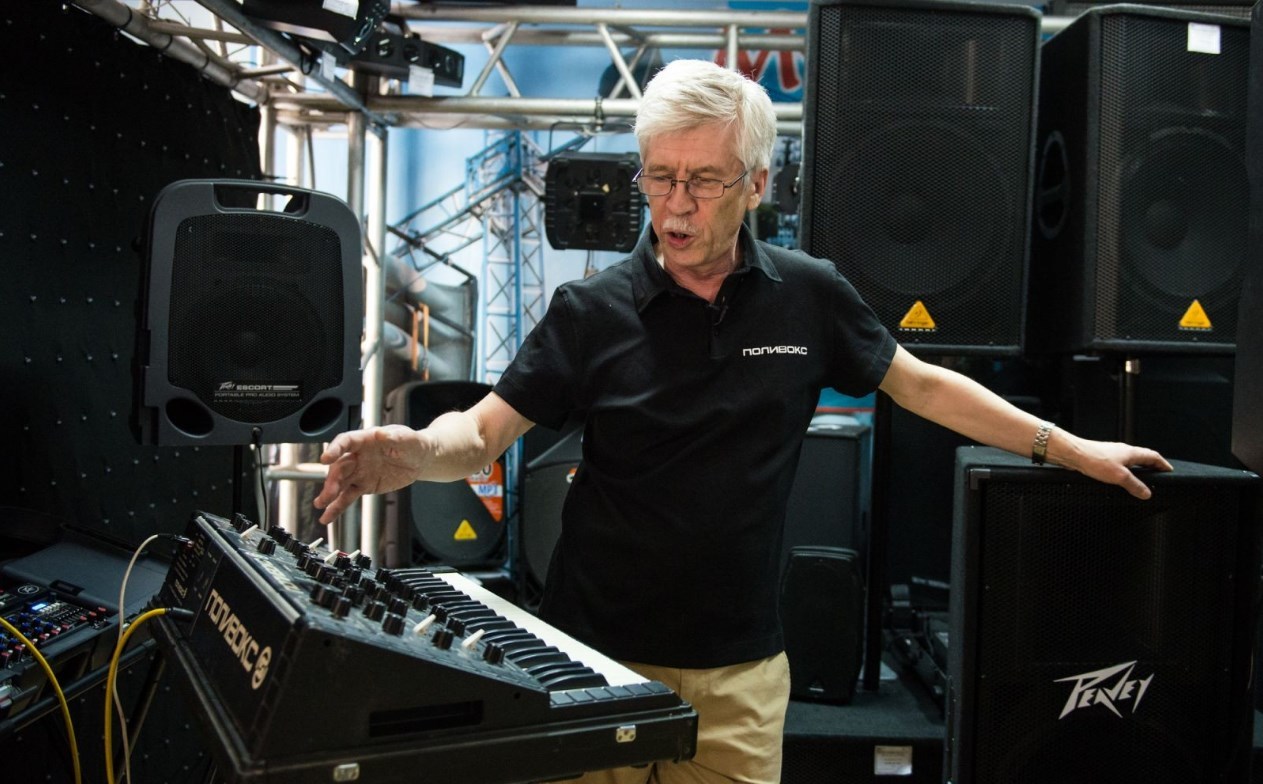
Kuzmin, to the beginning of work on the Polivoks synthesizer, already has experience in developing electromusical instruments, and as a reference, by his own admission, he singles out Moog instruments, high-quality, compact and not expensive.
In 1980, a group of four people began to work on the instrument: the lead engineer — Vladimir Kuzmin, his wife, the designer — the Olympics Kuzmina, the lead designer — Yuri Feofil and Igor Fedoseyev. As the creator of the instrument himself admits, he did not try to embody something fundamentally new in the development, he just wanted to create a tool that was not inferior to the existing counterparts. The result of the cohesive work of Kuzmin’s team is the emergence of a monophonic, two-generator, four-octave synthesizer , which will turn out to be the most “tenacious” and well-known Soviet instrument of this type.

In the process of development, there were numerous difficulties associated with the technological shortcomings of the production of the Vektor enterprise and the Kachkanar radio factory Formant, as well as in the approval by numerous authorities of a huge pile of project documents. In the author's story about the creation of a device there are many references to this, the following fragments of the article eloquently tell about these difficulties:
"..., for example, all synthesizer electronics were usually located on a single large printed circuit board, which could not be manufactured at our enterprise"
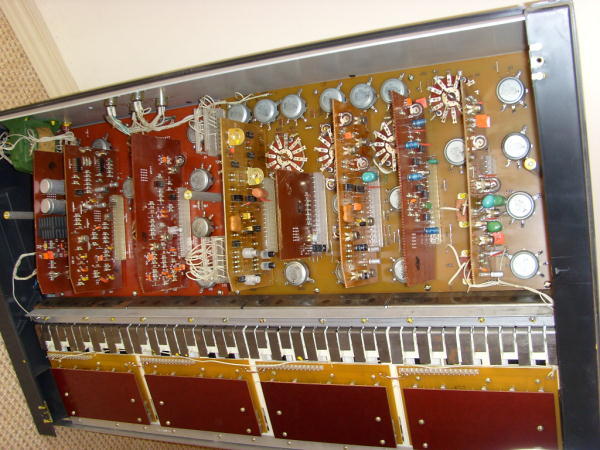
A significant contribution to the emergence of the polyvox was made by an engineer, a radio amateur, and part-time sound engineer of the Singing Guitars ensemble, Yury Zapalov. Which, after meeting with Kuzmin, thanks to the efforts of the latter, he entered into an employment agreement with the NPO "Vector" and began to develop the circuitry of the new device.

For the Soviet development of the period of stagnation, "Polivoks" was developed in the shortest possible time. From the appearance of the prototype to the serial production of the device, only two years have passed. At the same time, we can confidently say that Polivoks became the best Soviet synthesizer of this period. According to the creator of the device from 1982 to 1990, when the synthesizer was discontinued, about 29,000 instruments were produced by the Radio Formant plant.
Among the advantages of polyvox modern musicians distinguish the aggressive sound of the instrument. This sound is the result of generating distortion when the filter is running. The distortions, in turn, are introduced by the operational amplifier, and were considered a disadvantage, a side effect, before eminent musicians did not consider this feature a unique advantage. The design and construction of the polyvox filter, in principle, deserves a separate mention. The author describes the problem of choosing components as follows:
The original circuit design of this synthesizer module did not involve the use of capacitors, which was almost impossible, given the components used by the developer. The solution to the problem was found unexpectedly, with a deeper study of the operational amplifier. It was found that the cut-off frequency of the frequency response of the operational amplifier without feedback varies in proportion to the control current. Wherein:
It turned out that for a simplified circuit “with the receipt of 2, not 3 forms (AFC, LPF and PF), two chips, two capacitors and several resistors were required, and when using UD12, no capacitors are needed.
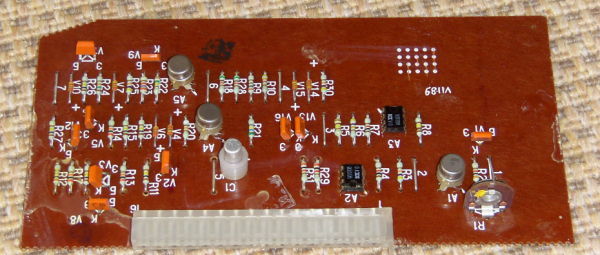
It was this filter and the features of the operational amplifier that caused distortion and harsh, as it later turned out, brand sound, especially in the low-frequency range. It is for this sound that polyvox is so fond of rock musicians and experimenters, it is thanks to him that the synthesizer suddenly became popular 10 years after it was removed from production.
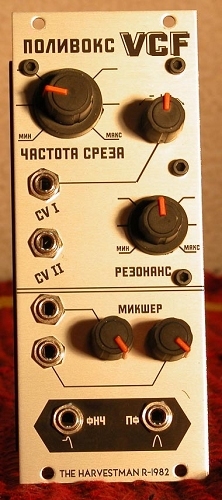
Subsequently, one of the western companies created a clone of the legendary filter, which is produced under the original name “Polivoks”. The device is sold with a note from the manufacturer that this is the “officially official” classic Soviet analog filter based on the KP140UD8 operational amplifier, designed in collaboration with Kuzmin.
It is known that after the start of serial production of poloboxes, in 1982, at Kachkanar radio plant "Formanta", there was a curiosity. One of the employees of the painting shop accidentally put a paint with a fluorescent additive on the knobs of regulators of several dozens of synthesizers.

They did not repaint, and an interesting bonus went to a certain number of first owners. It is not known exactly how many synthesizers went through such processing, but according to Kuzmin’s allegations there were several dozen.
Many Western and Russian musicians have rediscovered polyvox for themselves. Interest in the synthesizer arose when it was appreciated by musicians Rammstein and Franz Ferdinand. The vocalist of the Scottish team in an interview with Russian Rolling Stone said the following:

Rammstein keyboard player Christian Lorenz (Christian “Flake” Lorenz) is also in awe of the Soviet synthesizer and often experiments with a vintage instrument.

In addition, he even took part in an advertising photo shoot for a new polyvox.

An unexpected surge in the popularity of polyvox was celebrated last year, when the synthesizer was especially noted by the creator of the soundtrack in the DOOM game, Mick Gordon. In his video podcast “Doom behind the music” about creating a soundtrack for the game, Gordon more than once remembers the legendary instrument and demonstrates its capabilities.

Interestingly, throughout the 2000s, various manufacturers and just enthusiasts, regularly copy the filter, as well as other modules of polyvox. It was created quite a few digital device emulators, but many believe that such emulations do not reliably convey the sound of the instrument.
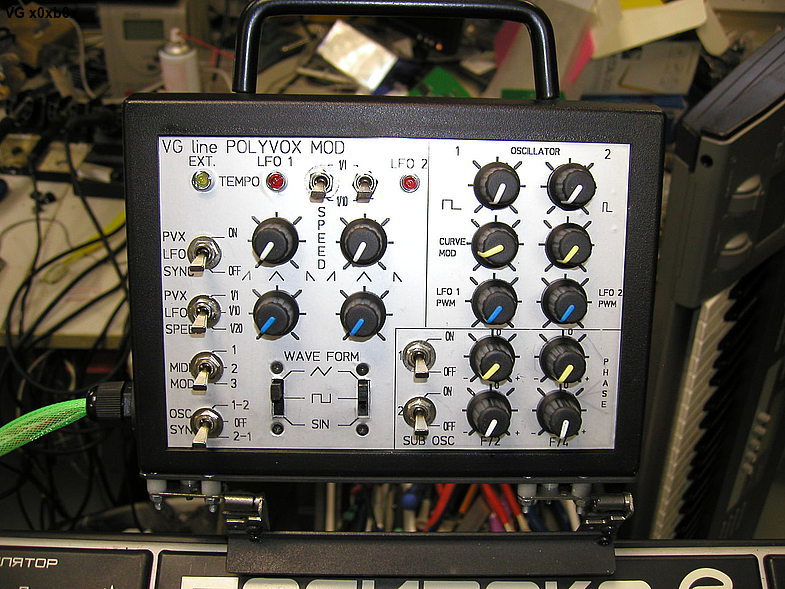
Interest spawned a commercial initiative, and now, a new polyvox is designed and sold. The device version 2.0 lost its keyboard, it became much lighter (3 kg, instead of 20 from the ancestor), and most importantly, it acquired the ability to integrate through a number of modern interfaces.


Moreover, manufacturers used 85% of Soviet or identical components to preserve the authenticity of the device.

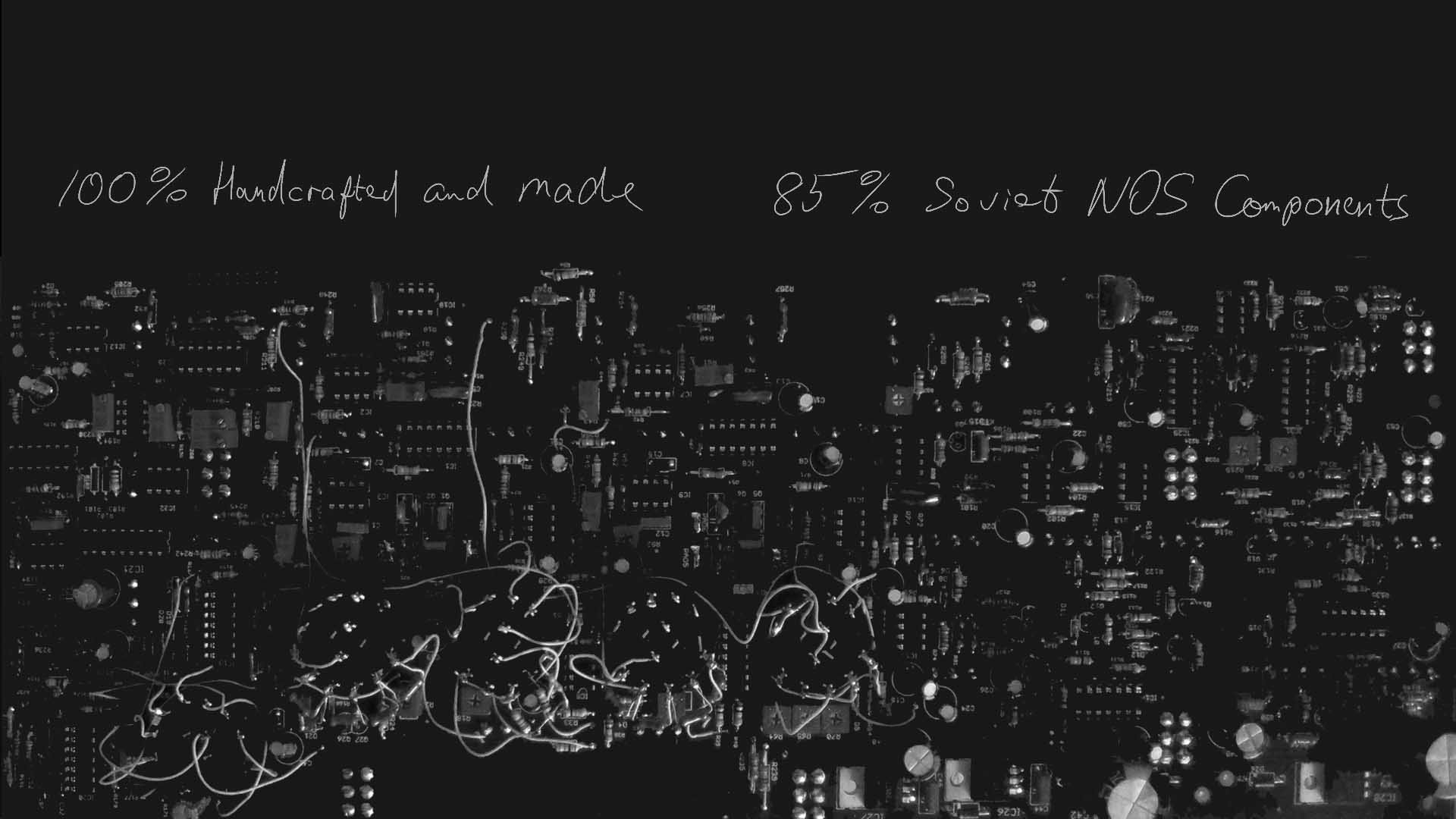
No less interesting is the fact that for English-speaking users, the terms that mark the knobs of regulators and toggle switches are specially translated.

Designers of the new device tried to keep the stylistics of the Olympics Kuzmina.
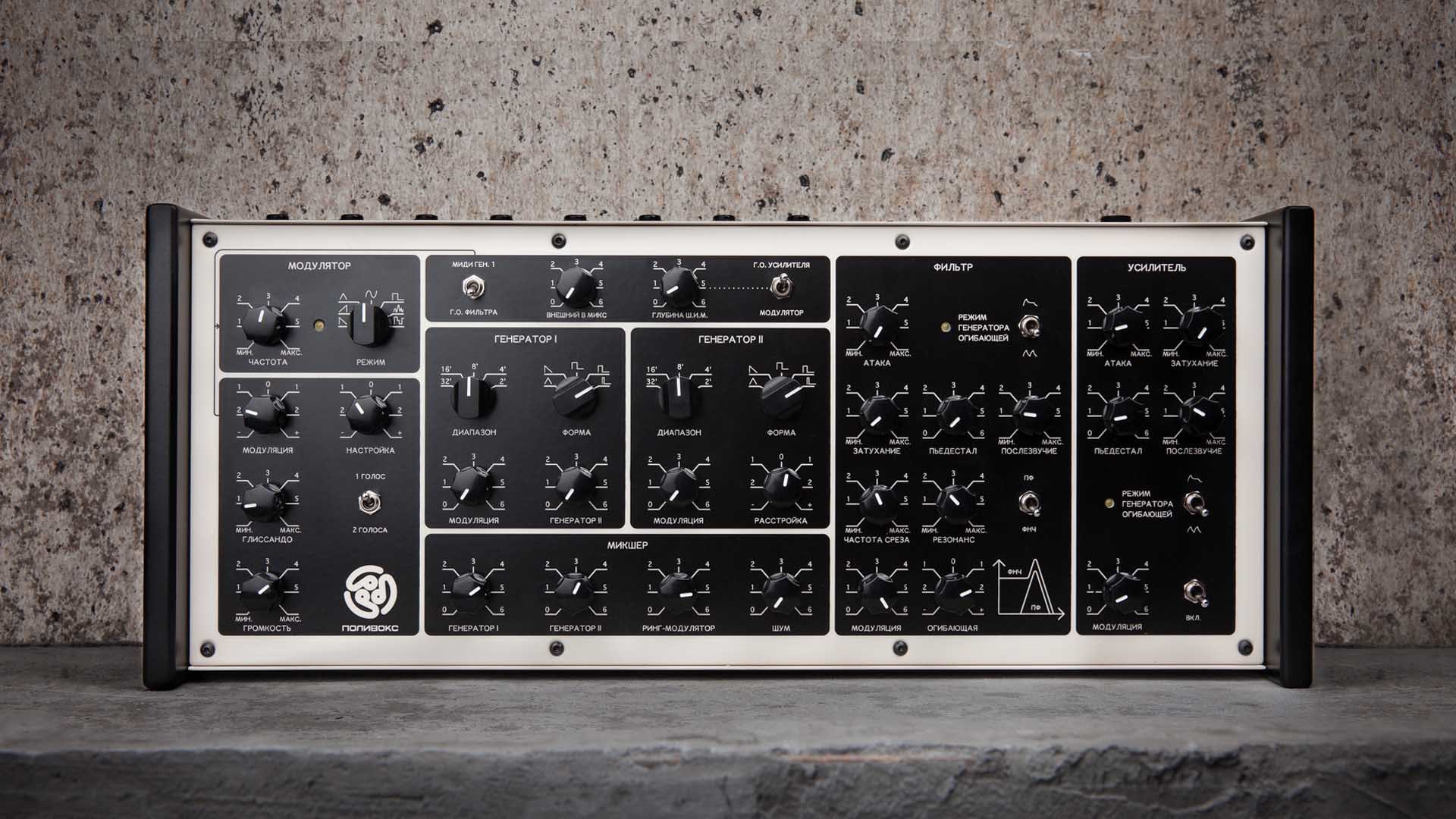
For several years, forums debated about the advantages and disadvantages of polyvox. The letters published by Kuzmin put the point in such disputes:
Of course, in addition to the notorious filter and design, there was nothing fundamentally new in the polyvox. Polyvox is not a revolution or even a small riot. At the same time, one should pay tribute to the device and its creator - this tool left a significant mark in the history of modern music as a means to create a wide palette of unique sounds, deep elaboration of atmospheric effects, high-quality and interesting arrangements. The synthesizer has lived several lives, the first in the Soviet VIA, the second in the studios of odious musical experimenters and the creators of dark dynamic soundtracks, the third he starts now what it will be, time will tell.

Polivoks, created by engineer Vladimir Kuzmin, cannot be called a world breakthrough or innovation for 1982, when it was launched into a series. The principles of the operation of the polyvox were not new in the world technology, if you do not take into account the unique, aggressive sound of the instrument. However, it is this device, due to circumstances, is the most famous and prominent in modern music product of the Soviet electromusical industry. It is this not too intricate, monophonic synthesizer that became a source of opportunities not only for his contemporaries, but for many famous modern musicians, in particular for such bands as Franz Ferdinand, Rammstein, Goldfrapp, as well as the creator of the soundtrack for the new DOOM, Mick Gordon.
')
Torments birth legend
Polyvox was developed by a Soviet engineer Vladimir Kuzmin, at a time when the era of analog instruments of this type was coming to an end. FM synthesis has already been invented and very soon the first digital sampler will be seen. At the same time, in a technically lagging alliance, only analog synthesizers are really mass produced, which by their capabilities, almost always, are inferior to the majority of Western models.

Kuzmin, to the beginning of work on the Polivoks synthesizer, already has experience in developing electromusical instruments, and as a reference, by his own admission, he singles out Moog instruments, high-quality, compact and not expensive.
In 1980, a group of four people began to work on the instrument: the lead engineer — Vladimir Kuzmin, his wife, the designer — the Olympics Kuzmina, the lead designer — Yuri Feofil and Igor Fedoseyev. As the creator of the instrument himself admits, he did not try to embody something fundamentally new in the development, he just wanted to create a tool that was not inferior to the existing counterparts. The result of the cohesive work of Kuzmin’s team is the emergence of a monophonic, two-generator, four-octave synthesizer , which will turn out to be the most “tenacious” and well-known Soviet instrument of this type.

In the process of development, there were numerous difficulties associated with the technological shortcomings of the production of the Vektor enterprise and the Kachkanar radio factory Formant, as well as in the approval by numerous authorities of a huge pile of project documents. In the author's story about the creation of a device there are many references to this, the following fragments of the article eloquently tell about these difficulties:
"..., for example, all synthesizer electronics were usually located on a single large printed circuit board, which could not be manufactured at our enterprise"

“At the time of the planned economy, a new product appeared with very great difficulties, one might say, in agony. First, it was necessary to ensure that it fell into the ministerial plans for R & D. This alone provided for coordination in many instances, including the Ministry of Commerce — what if nobody needed a product and would not take its trade? Then it was necessary to open the topic, conduct research, create draft and working documentation, make and test prototypes, approve the documentation in a heap of instances (head institute, profile ministry, Scientific Research Institute of Technical Aesthetics, Ministry of Consumer Services, Ministry of Commerce, Ministry of Communications and more authorities), after that get permission for an experimental series, test it again, make revision of the test results documentation and, finally, get permission for mass production. ”
A significant contribution to the emergence of the polyvox was made by an engineer, a radio amateur, and part-time sound engineer of the Singing Guitars ensemble, Yury Zapalov. Which, after meeting with Kuzmin, thanks to the efforts of the latter, he entered into an employment agreement with the NPO "Vector" and began to develop the circuitry of the new device.

For the Soviet development of the period of stagnation, "Polivoks" was developed in the shortest possible time. From the appearance of the prototype to the serial production of the device, only two years have passed. At the same time, we can confidently say that Polivoks became the best Soviet synthesizer of this period. According to the creator of the device from 1982 to 1990, when the synthesizer was discontinued, about 29,000 instruments were produced by the Radio Formant plant.
Original filter as a source of aggression
Among the advantages of polyvox modern musicians distinguish the aggressive sound of the instrument. This sound is the result of generating distortion when the filter is running. The distortions, in turn, are introduced by the operational amplifier, and were considered a disadvantage, a side effect, before eminent musicians did not consider this feature a unique advantage. The design and construction of the polyvox filter, in principle, deserves a separate mention. The author describes the problem of choosing components as follows:
“And in foreign synthesizers such filters have already been used. They were just designed on one special operational amplifier, the legendary CA3080, a voltage-controlled current source. We, unfortunately, did not produce its analogs, there was only one K140UD12 operational amplifier, the current consumption of which could be controlled by voltage. ”
The original circuit design of this synthesizer module did not involve the use of capacitors, which was almost impossible, given the components used by the developer. The solution to the problem was found unexpectedly, with a deeper study of the operational amplifier. It was found that the cut-off frequency of the frequency response of the operational amplifier without feedback varies in proportion to the control current. Wherein:
"... in the state variable filter it is such an inclusion of microcircuits, with open-loop feedback, that is, it is a ready-made integrator, and with current control."
It turned out that for a simplified circuit “with the receipt of 2, not 3 forms (AFC, LPF and PF), two chips, two capacitors and several resistors were required, and when using UD12, no capacitors are needed.

It was this filter and the features of the operational amplifier that caused distortion and harsh, as it later turned out, brand sound, especially in the low-frequency range. It is for this sound that polyvox is so fond of rock musicians and experimenters, it is thanks to him that the synthesizer suddenly became popular 10 years after it was removed from production.

Subsequently, one of the western companies created a clone of the legendary filter, which is produced under the original name “Polivoks”. The device is sold with a note from the manufacturer that this is the “officially official” classic Soviet analog filter based on the KP140UD8 operational amplifier, designed in collaboration with Kuzmin.
Soviet Limited Edition
It is known that after the start of serial production of poloboxes, in 1982, at Kachkanar radio plant "Formanta", there was a curiosity. One of the employees of the painting shop accidentally put a paint with a fluorescent additive on the knobs of regulators of several dozens of synthesizers.

They did not repaint, and an interesting bonus went to a certain number of first owners. It is not known exactly how many synthesizers went through such processing, but according to Kuzmin’s allegations there were several dozen.
The phenomenon of “Polivoks”: reincarnation - everything is new, well forgotten ...
Many Western and Russian musicians have rediscovered polyvox for themselves. Interest in the synthesizer arose when it was appreciated by musicians Rammstein and Franz Ferdinand. The vocalist of the Scottish team in an interview with Russian Rolling Stone said the following:
“Oh yes, this is an awesome thing! On the disc “Tonight” we were a little carried away by disco, and we just needed to pick up an adequate sound of keyboards. “Polyvox” is much more interesting than “moog”, “Hammond” and other synthesizers - we literally fought for the right to take a couple of notes on it. ”(Spelling RS saved)

Rammstein keyboard player Christian Lorenz (Christian “Flake” Lorenz) is also in awe of the Soviet synthesizer and often experiments with a vintage instrument.

In addition, he even took part in an advertising photo shoot for a new polyvox.

An unexpected surge in the popularity of polyvox was celebrated last year, when the synthesizer was especially noted by the creator of the soundtrack in the DOOM game, Mick Gordon. In his video podcast “Doom behind the music” about creating a soundtrack for the game, Gordon more than once remembers the legendary instrument and demonstrates its capabilities.

Interestingly, throughout the 2000s, various manufacturers and just enthusiasts, regularly copy the filter, as well as other modules of polyvox. It was created quite a few digital device emulators, but many believe that such emulations do not reliably convey the sound of the instrument.

Interest spawned a commercial initiative, and now, a new polyvox is designed and sold. The device version 2.0 lost its keyboard, it became much lighter (3 kg, instead of 20 from the ancestor), and most importantly, it acquired the ability to integrate through a number of modern interfaces.


Moreover, manufacturers used 85% of Soviet or identical components to preserve the authenticity of the device.


No less interesting is the fact that for English-speaking users, the terms that mark the knobs of regulators and toggle switches are specially translated.

Designers of the new device tried to keep the stylistics of the Olympics Kuzmina.

For several years, forums debated about the advantages and disadvantages of polyvox. The letters published by Kuzmin put the point in such disputes:
“My dear Vladimir,
This is the time when the pictures were taken. ... Any instrument that makes it “own sounds” is special.
Thank you Sir,
Your Rick Wakeman »
“Hello, Vladimir!
I have heard your Polivoks, but I have never seen one. I'm happy
Congatulations!
Bob Moog
Total
Of course, in addition to the notorious filter and design, there was nothing fundamentally new in the polyvox. Polyvox is not a revolution or even a small riot. At the same time, one should pay tribute to the device and its creator - this tool left a significant mark in the history of modern music as a means to create a wide palette of unique sounds, deep elaboration of atmospheric effects, high-quality and interesting arrangements. The synthesizer has lived several lives, the first in the Soviet VIA, the second in the studios of odious musical experimenters and the creators of dark dynamic soundtracks, the third he starts now what it will be, time will tell.
Source: https://habr.com/ru/post/401015/
All Articles